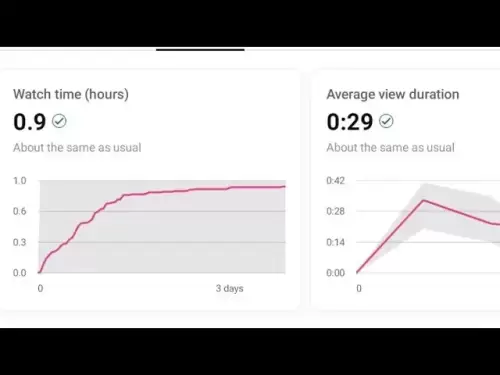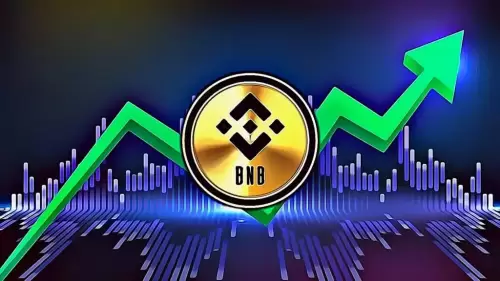 |
|
 |
|
 |
|
 |
|
 |
|
 |
|
 |
|
 |
|
 |
|
 |
|
 |
|
 |
|
 |
|
 |
|
 |
|
Cryptocurrency News Articles
The Most Comprehensive Single-Page Explanation of XRP, the XRP Ledger (XRPL), Ripple, and Their Associated Technologies
Apr 28, 2025 at 02:33 pm
This post addresses both newcomers and long-time supporters of XRP. He also encouraged the community to read the document thoroughly, emphasizing its depth and clarity.

Software engineer and blockchain advocate Vincent Van Code has highlighted what he describes as the most comprehensive single-page explanation of XRP, the XRP Ledger (XRPL), and their associated technologies by Ripple.
In a post on X, originally Twitter, he addressed both newcomers and long-time supporters of XRP. He urged the community to read the 21Shares blog post titled “XRP: SWIFT on the Blockchain”.
Van Code went on to say that if people get bored or don’t bother reading it then they really shouldn’t go anywhere near XRP.
The post by 21Shares offers a structured and technically grounded overview of the XRP Ledger, the technology stack developed by Ripple, and the broader financial ecosystem in which these components operate. It begins by situating the XRPL as one of the earliest blockchain networks, having launched in 2012.
Developed by Ripple Labs, XRPL was specifically designed to improve the efficiency of traditional financial systems, forming the foundation for RippleNet, a global payments network that benefits from the ledger’s high speed and low transaction costs.
The native token XRP is an essential component of XRPL’s operation, used for paying transaction fees, deterring spam, and facilitating bridge assets for cross-border transfers. With transaction costs typically measured in fractions of a cent, the XRPL is presented as one of the most cost-effective blockchain platforms today.
The blog post elaborates on the XRPL’s multifaceted capabilities. Beyond its core function in facilitating cross-border payments, the network supports tokenizing real-world assets (RWAs), decentralized exchange functions, escrow mechanisms, and built-in compliance tools.
These features make the XRPL well-suited for complex financial applications, including liquidity provisioning and decentralized finance (DeFi). Native support for NFTs, synthetic assets, and stablecoins also positions the XRPL as a competitive platform for broader asset management use cases.
While the XRPL base layer does not support arbitrary smart contracts—a conscious decision to prioritize security and stability over maximalist programmability—it does integrate Ethereum-compatible sidechains that provide this functionality and expand use cases without compromising the main ledger’s performance.
The document offers a detailed explanation of how the XRP Ledger achieves consensus—a critical aspect of any blockchain's operation. It does not rely on energy-intensive mining or wealth concentration, as seen in Proof-of-Work or Proof-of-Stake systems.
Instead, XRPL employs a unique consensus protocol that enables fast and secure transaction validation without heavy computational overhead. This operational efficiency is a key reason for its longstanding viability in enterprise and institutional use cases.
The article further explains how RippleNet connects financial institutions and payment providers through a unified network that enables real-time fund transfers. Within this network, products like xCurrent, xRapid, and xVia serve distinct roles.
xCurrent allows for real-time cross-border payments using banks’ existing infrastructure and messaging systems, while xRapid utilizes XRP to provide liquidity on demand, reducing the need for pre-funded accounts. xVia offers a simplified interface for businesses to send global payments with added metadata, such as invoices or shipping information.
Each solution contributes to a cohesive strategy to replace outdated financial messaging systems like SWIFT with a blockchain-based alternative that is faster, cheaper, and more transparent.
The document also touches upon the growing institutional interest in RippleNet, mentioning partnerships with central banks and the tokenization of U.S. Treasuries through a collaboration with Ondo Finance. It highlights Ripple’s RLUSD, a U.S. dollar-pegged stablecoin, that expands XRP’s utility in retail and institutional markets.
By showcasing Ripple’s expanding suite of financial products, its alignment with global regulatory trends, and its ongoing technical development, the document makes a compelling case for XRP and XRPL as foundational tools in the evolution of cross-border finance.
Disclaimer:info@kdj.com
The information provided is not trading advice. kdj.com does not assume any responsibility for any investments made based on the information provided in this article. Cryptocurrencies are highly volatile and it is highly recommended that you invest with caution after thorough research!
If you believe that the content used on this website infringes your copyright, please contact us immediately (info@kdj.com) and we will delete it promptly.






























































